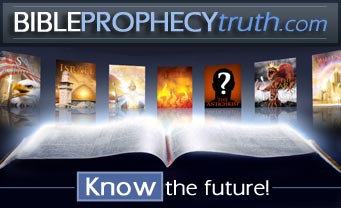What is the Separation of Church and State?
Posted by Glenn SR | | Posted on 11:59 AM
0
By Austin Cline
What is the separation of church and state? That is a very good question — the separation of church and state is perhaps one of the most misunderstood, misrepresented and maligned concepts in today’s political, legal and religious debates. Everyone has an opinion, but unfortunately, many of those opinions are woefully misinformed.
The separation of church and state is not only misunderstood, it is also exceedingly important. That is probably one of the few points on which everyone on all sides of the debate can readily agree upon — their reasons for agreeing may differ, but they do concur that the separation of church and state is one of the key constitutional principles in American history.
What Are "Church" and "State"?
Understanding the separation of church and state is complicated by the fact that we are using such a simplified phrase. There is, after all, no single “church.” There are many religious organizations in the United States taking different names — church, synagogue, temple, Kingdom Hall and more. There are also many corporate bodies that do not adopt such religious titles but which are nevertheless controlled by religious organizations — for example, Catholic hospitals.
Also, there is no single “state.” Instead, there are multiple levels of government at the federal, state, regional and local level. There is also a great variety of government organizations — commissions, departments, agencies and more. These can all have different levels of involvement and different relationships with the aforementioned religious organizations.
This is important because it underscores the fact that, in the “separation of church and state,” we cannot be talking about a single, literal church and a single, literal state. Those terms are metaphors, meant to point to something larger. The “church” should be construed as any organized religious body with its doctrines/dogmas and “state” should be construed as any governmental body, any government-run organization or any government-sponsored event.
Thus, a more accurate phrase than “separation of church and state” might be something like “separation of organized religion and civil authority,” because religious and civil authorities are not and should not be invested in the same people or organizations. In practice, this means that civil authority cannot dictate to or control organized religious bodies. The state cannot tell religious bodies what to preach, how to preach or when to preach. Civil authority must exercise a “hands off” approach, neither helping nor hindering religion.
Protecting Church and State
Separation of church and state is a two-way street. It isn’t just about restricting what the government can do with religion, but also what religious bodies can do with the government. Religious groups cannot dictate to or control the government. They cannot cause the government to adopt their particular doctrines as policy for everyone, they cannot cause the government to restrict other groups, etc.
The biggest threat to religious freedom is not the government — or at least, not the government acting alone. We very rarely have a situation where secular government officials act to repress any particular religion or religion in general. More common are private religious organizations acting through the government by having their own doctrines and beliefs codified into law or policy.
Thus, the separation of church and state ensures that private citizens, when acting in the role of some government official, cannot have any aspect of their private religious beliefs imposed upon others. School teachers cannot promote their religion to other people’s children. Local officials cannot require certain religious beliefs on the part of government employees. Government leaders cannot make members of other religions feel like they are unwanted or are second-class citizens by using their position to promote particular religious beliefs.
This requires moral self-restraint on government officials, and even to a degree on private citizens — a self-restraint which is necessary for a religiously pluralistic society to survive without descending into religious civil war. It ensures that the government remains the government of all citizens, not the government of one denomination or one religious tradition. It ensures that political divisions not be drawn along religious lines, with Protestants battling Catholics or Christians battling Muslims for “their share” of the public purse.
The separation of church and state a key constitutional liberty which protects the American public from tyranny. It protects all people from the religious tyranny of any one religious group or tradition and it protects all people from a government intent on tyrannizing some or any religious groups.





